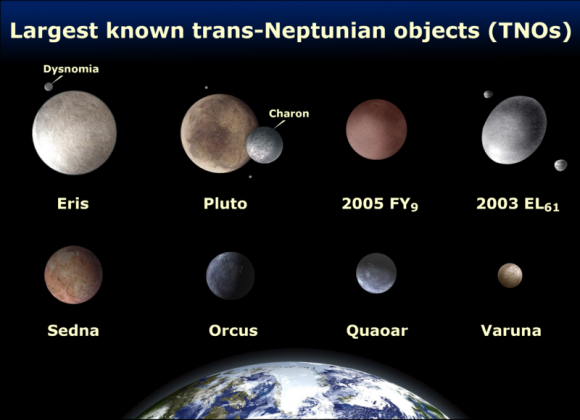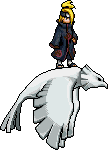Lucidity*Flashes newsletter
- February 2014: “Sleep is the best meditation.”; Dreaming and Awakening; Lucid Dreaming Induction: The State of the Art 2014; Introducing N2D2.
Excerpts from NightLight
- NL1.1: “How to Remember your Dreams”: practical hints on developing the art of dream recall—the first step to learning lucid dreaming.
- NL3.2: “Other Worlds: Out-Of-Body Experiences and Lucid Dreams” by Lynne Levitan and Stephen LaBerge. Discussion of a laboratory study comparing OBEs and lucid dreams.
- NL4.2: “A Thousand and One Nights of Exploring Lucid Dreaming” by Lynne Levitan. A summary of selected research carried out in NightLight.
- NL5.2: “Testing the Limits of Dream Control: The Light and Mirror Experiment” by Lynne Levitan and Stephen LaBerge. To what extent can we influence dreams in the directions we desire? Do we have more or less control over our experiences in dreaming than in waking life?
- NL5.3: “Lucid Dreaming Research: Past and Future” by Stephen LaBerge. A review of laboratory studies on lucid dreaming at Stanford University and a proposal for future research.
- NL6.2: “A Fool's Guide to Lucid Dreaming” by Lynne Levitan. Three common failures of lucidity and how to overcome them.
- NL6.3: “An Hour of Wakefulness Before Morning Naps Makes Lucidity More Likely” by Stephen LaBerge, Leslie Phillips, and Lynne Levitan. Getting up an hour early, staying awake for 30-60 minutes reading about lucid dreaming, doing MILD briefly, then taking a morning nap is an effective way to induce lucid dreams.
- NL7.1: “Adventures with the NovaDreamer” by Keelin. A creative dreamer's experiences and adventures using the NovaDreamer to induce lucid dreams.
- NL7.3-4: “Diary From Lucid Dream Camp” by Keelin. The further adventures of an admitted dreamer at the first annual lucid dreaming workshop: Consciousness: Dreaming and Waking at Stanford University.
- NL7.3-4: “Prolonging Lucid Dreams” by Stephen LaBerge. Two techniques effectively prolong lucid dreams, increasing the relative odds of staying in the dreamstate by 30-50 times.
Excerpts from Lucid Dreaming
- Contents: Chapter outline of LaBerge's 1985 classic, Lucid Dreaming
- Chapter 8: “Dreaming, Function, and Meaning” Why we have dreams and what do they mean? Contemporary theories of dreaming.
- Chapter 9: “Dreaming, Illusion, and Reality” Curiosities of dreaming consciousness: Out-of-body experiences, dream telepathy, and “mutual” or “shared” dreams.
Excerpts from Exploring the World of Lucid Dreaming
- Contents: Chapter outline of the contents of Exploring the World of Lucid Dreaming (1990) by Stephen LaBerge and Howard Rheingold
- Chapter 6: “Principles and Practice of Lucid Dreaming” shows you how to retain your lucidity, prevent premature awakenings, awaken when you wish, and guide your dreams intelligently.
- Chapter 10: “Overcoming Nightmares” helps you use lucid dreaming to face and overcome fears and inhibitions that may be preventing you from getting the most out of your life.
Research Articles and Abstracts
- “Lucid dreaming: Evidence that REM sleep can support unimpaired cognitive function and a powerful methodology for studying the psychophysiology of dreaming” by Stephen LaBerge. Commentary in a special issue on dreaming in Behavioral and Brain Sciences (2000).
- “Varieties of Lucid Dreaming Experience” by Stephen LaBerge and Don DeGracia. The meaning of “lucid dreaming.” How do lucid dreams relate to “astral projection” and OBEs? Variations in lucid dream initiation. Perceptual variations. Emotions. Volition and action. Termination of lucid dreams.
- “Lucid Dreaming: Psychophysiological Studies of Consciousness during REM Sleep” by Stephen LaBerge. Lucid dreaming physiologically verified. Physiological characteristics of lucid dreaming. Psychophysiological relationships during REM sleep. Implications for research on sleep and cognition.
- “Validity Established of DreamLight Cues for Eliciting Lucid Dreaming” by Stephen LaBerge and Lynne Levitan. A controlled study demonstrating the validity and effectiveness of the DreamLight lucid dream induction device.
- “Dreaming and Consciousness” by Stephen LaBerge. Abstract of paper presented at the Toward a Science of Consciousness Conference (Tucson, April, 1996).
- Frederik van Eeden's 1913 article, “A Study of Dreams” in which the term “lucid” dreaming is first used. Thanks to Lucidity Institute member Blake Wilfong (blake@phoenix.net) for making this classic available.
EXPERIMENTS IN LUCID DREAMING
Comparing Lucid and Non-Lucid Dream Content. Some scientists seem to assume that lucid dreams are “too different” from non-lucid dreams to use lucid dreamers to study, for example, mind-body relationships during REM sleep. With an aim towards understanding the extent to which lucid dreams differ from non-lucid dreams in other ways than (obviously) whether or not the dreamer knows it is a dream at the time, we have designed the following simple study. In short, we are asking for four dream reports via email; Two of these reports should be lucid dreams, and two should be non-lucid dreams.
The Best Sleep Posture for Lucid Dreaming: A Revised Experiment Testing a Method of Tibetan Dream Yoga. An experiment investigating sleep posture and nasal laterality (an ancient Yogic technique for influencing states of mind), combined with the extraordinarily powerful napping technique of inducing lucid dreams.
LUCIDITY INSTITUTE MAILING LIST
Keep up-to-date with lucid dreaming news (web site updates, events, experiments, new product announcements and special offers, etc.) by filling out a short form for theLucidity Institute mailing list.
AND NOW FOR SOMETHING COMPLETELY DIFFERENT...
Bedar, the Watchman, caught Nasrudin prising open the window of his own bedroom from the outside, in the depths of night.
“What are you doing, Mulla? Locked out?”
“Hush! They say I walk in my sleep. I am trying to surprise myself and find out.”Nasrudin is a mirror in which you see yourself. Want to see more?
http://www.lucidity.com/




